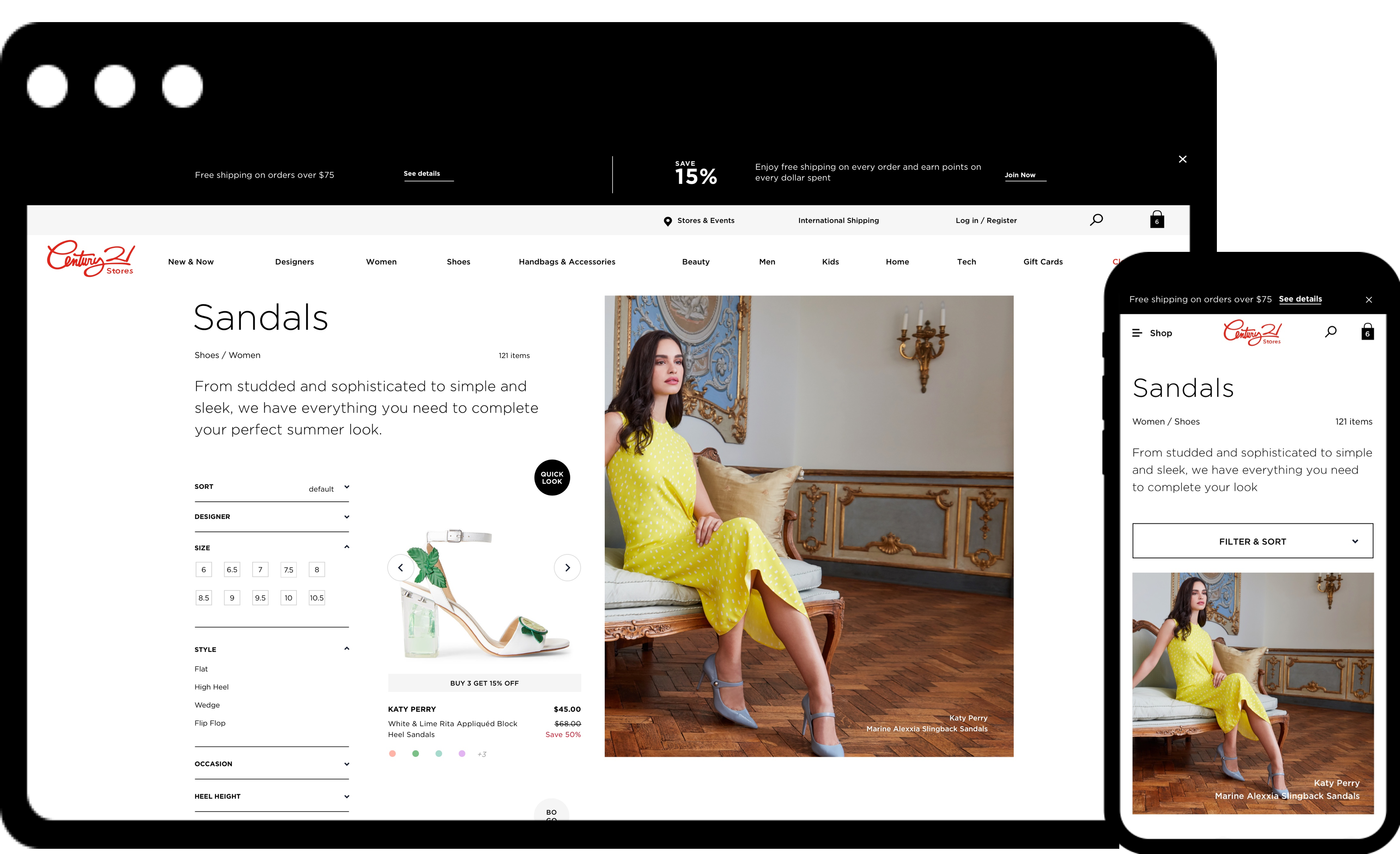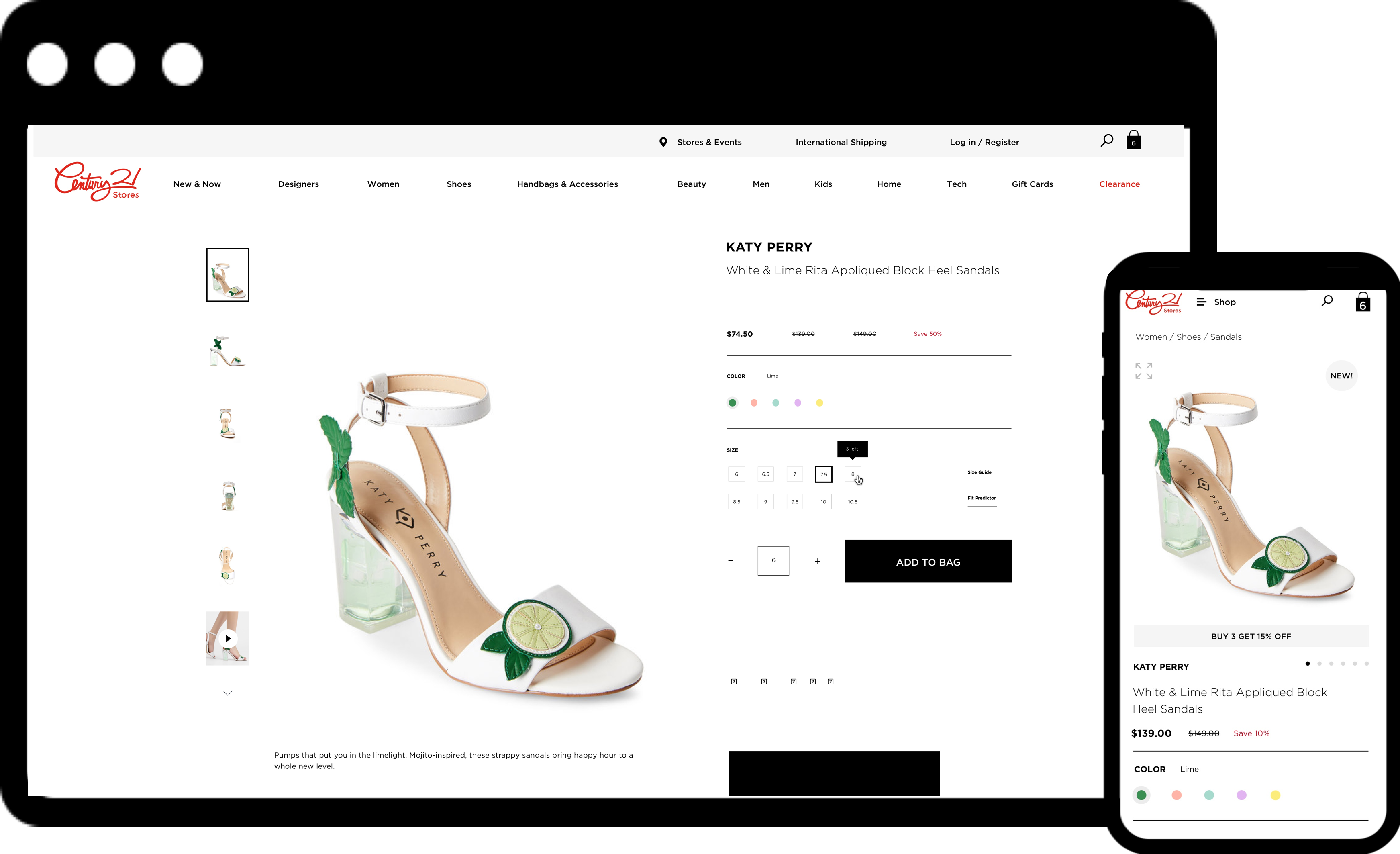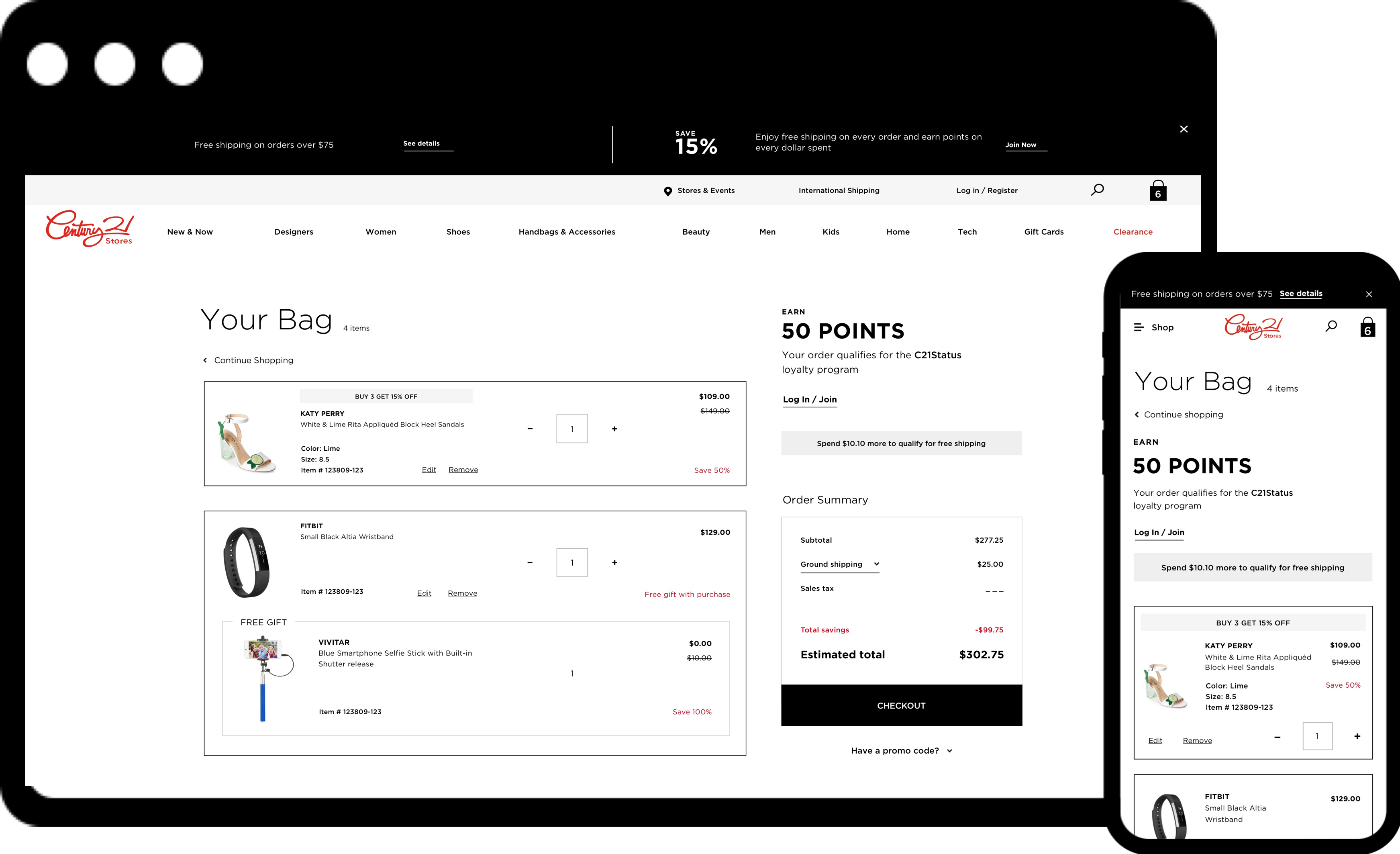Century 21 Department Store
Salesforce Commerce Cloud E-commerce Replatform
Century21 needed more sophisticated e-commerce functionality and sought out my employer, Optaros, to rebuild their web store on Salesforce Commerce Cloud. Optaros specializes in e-commerce platforms and the accompanying system integrations.
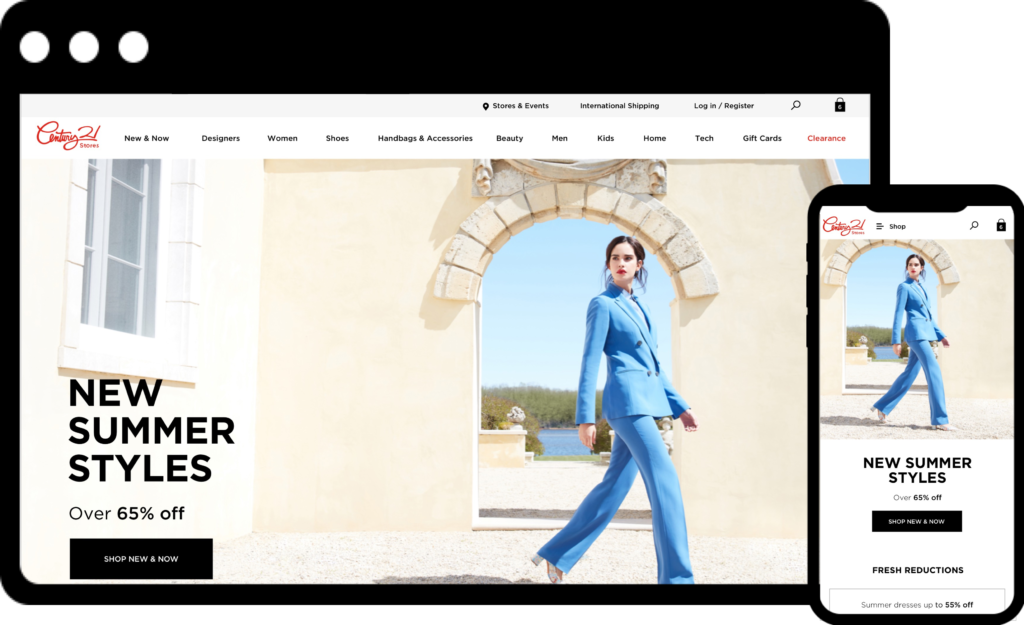
Project Summary
- Century 21 needed more sophisticated e-commerce functionality and sought out my employer, Optaros, to rebuild their web store on Salesforce Commerce Cloud. Optaros specializes in e-commerce platforms and the accompanying system integrations.
- Lead UX designer responsible for stakeholder interviews, site map, feature value matrix and gap analysis, wireframes and functional requirements documentation.
- I was responsible for designing a web store experience that allowed for more advanced merchandising functions, integrated a private label credit card, and supported flexible content across mobile and desktop devices.
The Problem
It's Time For A New Platform
Century 21 Department Stores’ e-commerce team decided to replatform their web store, moving to the newly launched Salesforce Commerce Cloud, to address weaknesses in their online store, including:
- Outdated merchandising capabilities that limited how products were grouped and displayed.
- Inadequate content modules for promoting their loyalty program and inadequate featues to support the desired customer experience.
- Limited ability to customize and extend promotions and pricing features that would appeal to Century 21’s brand-aware, price-conscious constomer base.
Our Approach
Stakeholder Interviews + Workshop
I planned a series of interviews with the different internal teams, from merchandising, IT, accounting, customer service and guest services, to understand what information each department contributed to the site or required from the site for reporting. From these interviews, I was able to learn about, and document, what the different stakeholder teams required from the site and uncover what they knew about their customer.
These interviews helped me understand how Century21 delivered value to their customer, it also allowed me to connect and build rapport with the stakeholders, which was useful in later project phases when it was necessary to reconcile competing requirements.
From the interviews, I converted numerous comments about the customer experience into data points written on post-it notes. Working with the merchandising team, I helped them map the this information across the phases of the buying journey to visualize where Century21’s web store was most and least successful in supporting their customer’s shopping experience.

Our Approach
documenting the features and gaps
From the interview and workshop artifacts, I distilled the complexity of business processes across multiple teams into a feature value matrix. The feature value matrix identified gaps in the client's needs that were not out-of-the-box for the Salesforce platform and I developed a comprehensive list of user and business requirements that identified competing priorities and information gaps. This matrix became an invaluable tool for surfacing institutional knowledge, tracking complex open questions and encouraging participation across multiple teams.
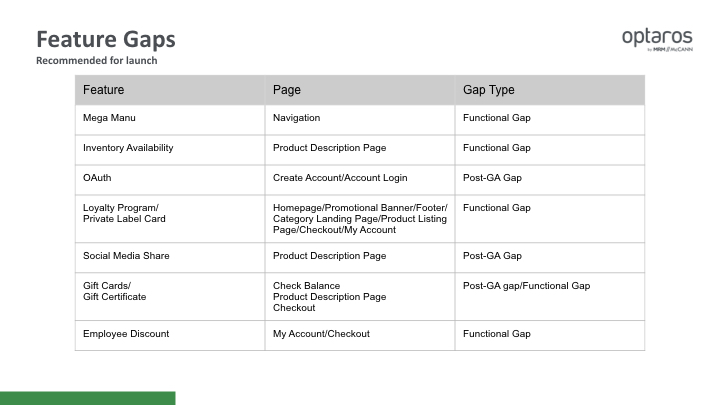
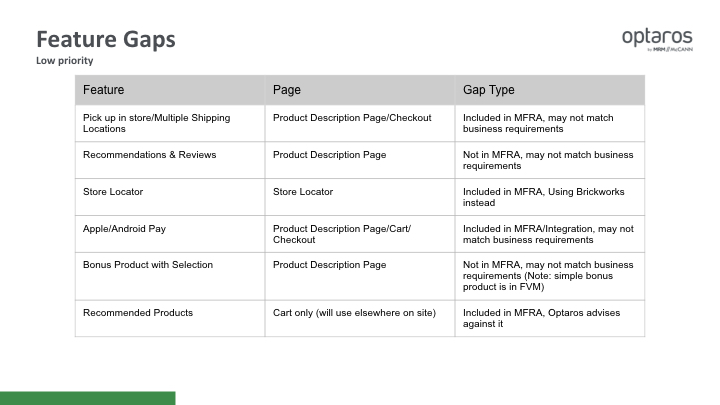
OUR SOLUTION
matching the message to the user
One important piece of functionality in the Salesforce platform was the ability to customize messaging and product displays to different customer groups. We worked with Century 21’s e-commerce team to carefully define different user groups early in the process, in order to account for different interaction states during the design phase
- Quicklook appeals to the browsing shopper: Easier access to the product via a robust quicklook feature helps the customer find what they are looking for and move directly into checkout via an “Add to Cart” button.
- Use the mega-menu to support a large product catalog: The full-width mega-menu makes it easier for the user to scan across a large selection of inventory and merchandising categories, as well as photo and textual display of these categories, reflecting different shopping experiences, such as the focused shopper and the casual shopper.
- Combine product and editorial content: Spotlighting individual products and shopping categories create visual anchors to draw the customer’s interest further into the shopping funnel.
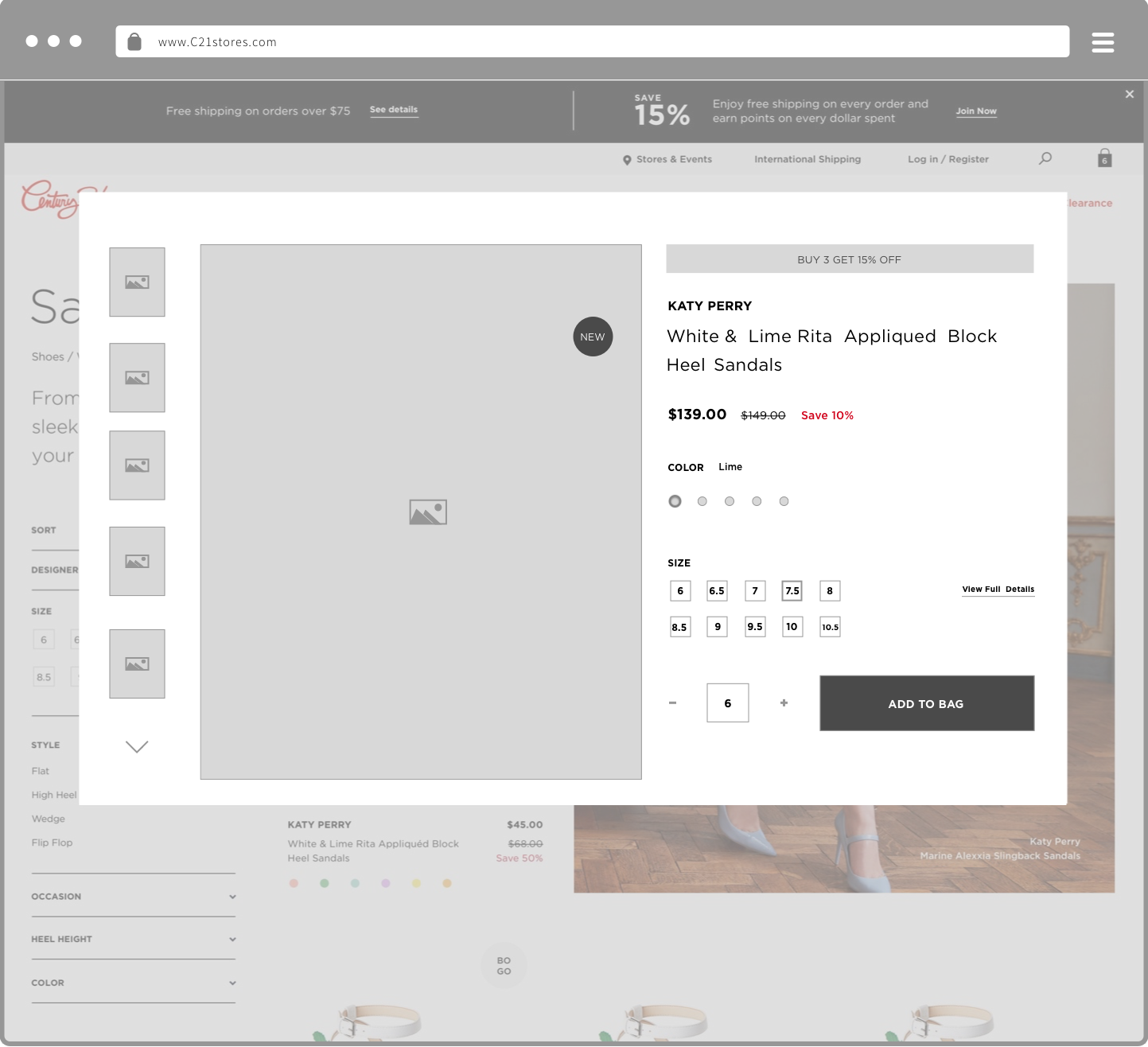
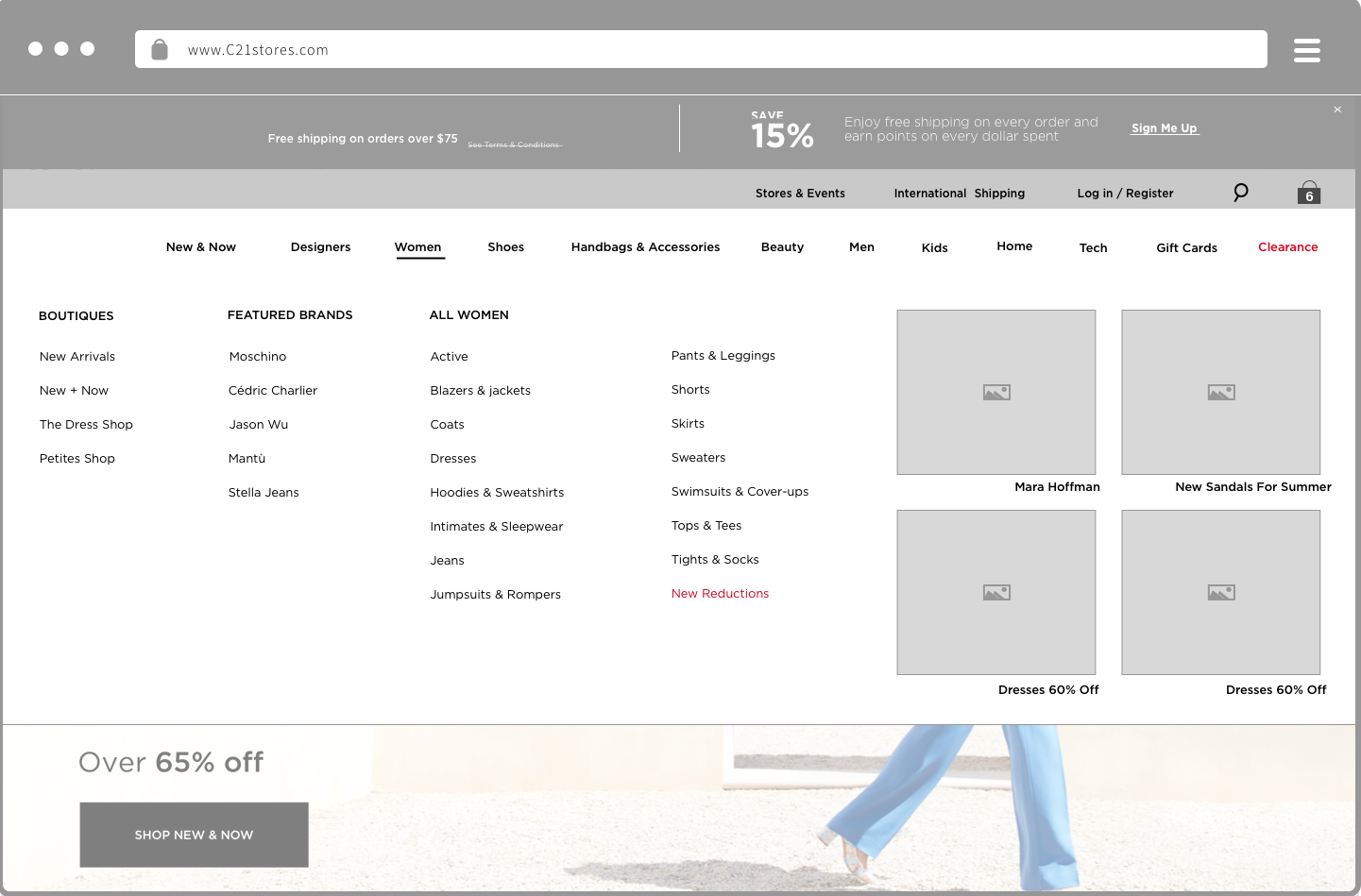

Our Solution
The rise of loyalty programs
Century 21’s loyalty program used a tiered points system and reward coupons to incentivize returning customers. Additionally, a private label credit card was integral to the tiered system and the e-commerce team messaged the card offering to turn one-time customers into repeat customers.
- Plan for eligibility states: Don't market to customers who are not eligible for the program.
- Segmenting customers into user groups: Standardized content blocks were implemented across the site with logic to distinguish different stages in the interest-building and registration phases.
- Highlight point accumulation: Notifying customers about how many points they could earn drives interest in the program's benefits.
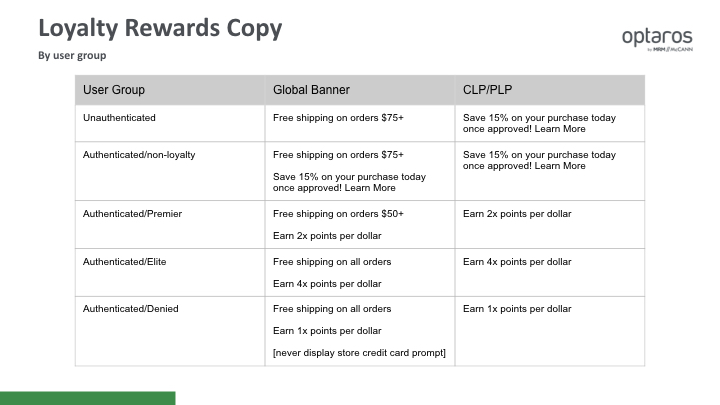
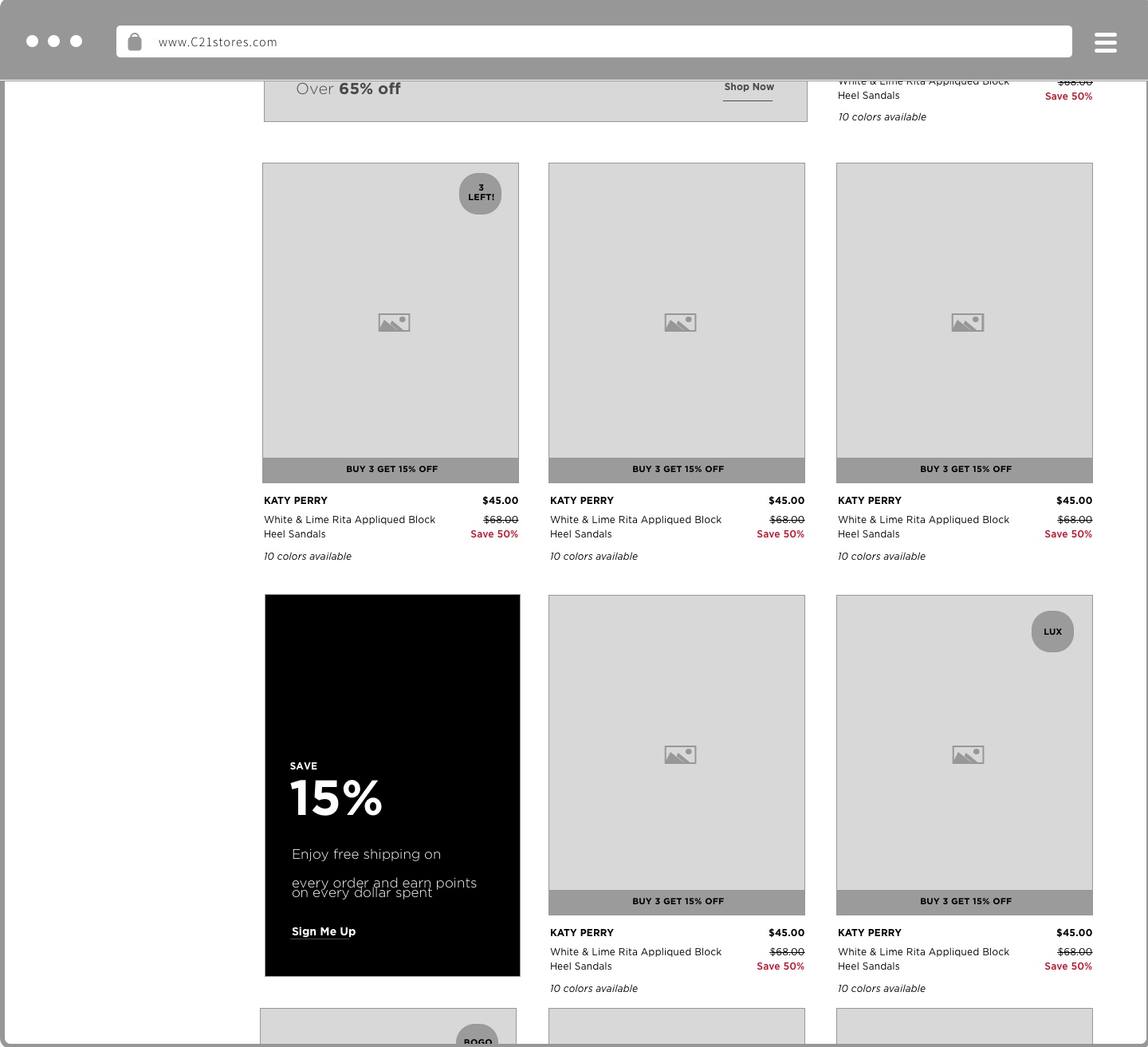
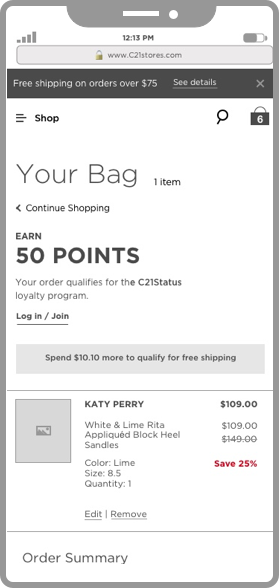
Our Solution
PROMOTIONAL BADGES AND SPECIAL PRICING DRIVE THE DISCOUNT EXPERIENCE
Century 21’s merchandising team sought to use custom promotional badges to highlight specific features that would make a product more appealing to their customer base and tap into psychological forces (such as scarcity) to boost sales, without excessive repetition of badges on the listing grid.
- Compliment the brand with thoughtful product badges: specialty badges reflect the merchandising team's approach to creating unique product lines and their commitment to providing customer with distinct collections not offered by competitors.
- Use price-books to highlight pricing discounts: Strikethrough pricing and % off calculations help trendy, price-conscious customers feel confident they are getting the best deal.
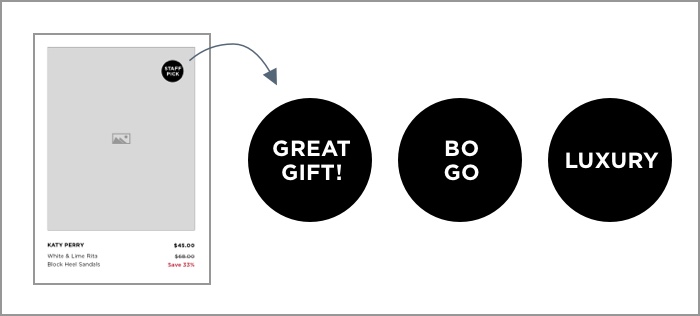
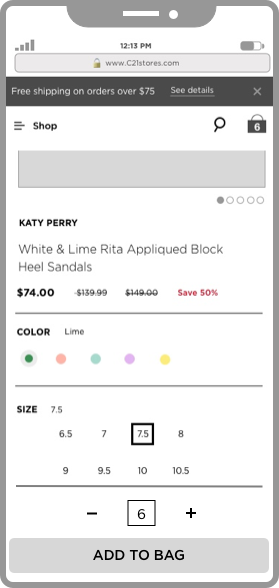
Conclusion
A new platform reinvogorates a small e-commerce team
With the launch of their new webstore, the team has been actively experimenting with new features, new ways of working and rethinking the merchandising opportunities. The process opened new channels between two previously siloed teams, allowing the e-commerce and IT teams to collaborate more efficiently as they move forward.
